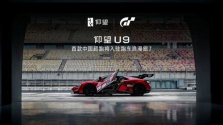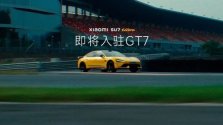I don't follow CATL but it sounds like Qilin can be both LFP and non-LFP. If I was a betting person, I would guess the latter for this case.I think the battery pack is CATL Qilin, I don't know if Li Auto package itself has recently.
You are using an out of date browser. It may not display this or other websites correctly.
You should upgrade or use an alternative browser.
You should upgrade or use an alternative browser.
New Energy Vehicles (NEVs) in China
- Thread starter supercat
- Start date
I'm worried, is the CATL Qilin widespread in EVs? Or are they using different models?I don't follow CATL but it sounds like Qilin can be both LFP and non-LFP. If I was a betting person, I would guess the latter for this case.
Or maybe it's bad manufacturing/design on the car itself.
The battery seems to have been out for 2 years and there has been no real fire accident that happened without any real reason until recently with the Li Mega.
Only time will tell, I guess.
The battery seems to have been out for 2 years and there has been no real fire accident that happened without any real reason until recently with the Li Mega.
Only time will tell, I guess.
Many old models use ternary qilin battery packages; the newest package can endure this kind of accident. The Chinese government has updated its standard. But LFP is still safer anyway.I'm worried, is the CATL Qilin widespread in EVs? Or are they using different models?
Well, we can only hope for the best....Many old models use ternary qilin battery packages; the newest package can endure this kind of accident. The Chinese government has updated its standard. But LFP is still safer anyway.
It's all a numbers game. Existing BYD/Li/Nio/Tesla fleet in active use vs battery failure rate. If you want to get more granular, you can break it up by car model. The problem with the EV companies with smaller fleets out there in active use is just the small sample size from which to judge battery safety. Without those analytics to judge by, you're just better off going LFP or nothing at all. And as soon as Sodium mainstreams, switch to that.Well, we can only hope for the best....
I don't follow CATL but it sounds like Qilin can be both LFP and non-LFP. If I was a betting person, I would guess the latter for this case.
Or maybe it's bad manufacturing/design on the car itself.
The battery seems to have been out for 2 years and there has been no real fire accident that happened without any real reason until recently with the Li Mega.
Only time will tell, I guess.
My understanding from social media post is that
- The battery is NMC
- The battery was damaged and user/driver ignored warning lights for a period (unspecified)
NMC and LCO are both notoriously unsafe. Design choices have to consider fool proofing due to most customers being the biggest idiots, dumb as bricks.My understanding from social media post is that
- The battery is NMC
- The battery was damaged and user/driver ignored warning lights for a period (unspecified)


